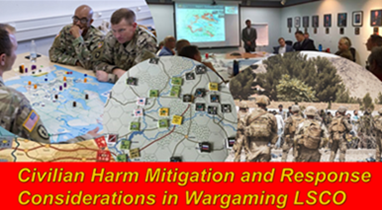[Editor’s Note: Regular consumers of Army Mad Scientist content — via this blog site and The Convergence podcast — already know how wargaming can enhance Professional Military Education (PME), hone cognitive warfighting skills, and broaden our understanding of the Operational Environment.
This past spring, Army Mad Scientist sought to crowdsource the intellect of the Nation (i.e., you — our community of action!) with our Calling all Wargamers flyer, soliciting input about your wargaming experiences:
-
-
- What are you learning about Large-Scale Combat Operations (LSCO)?
-
-
-
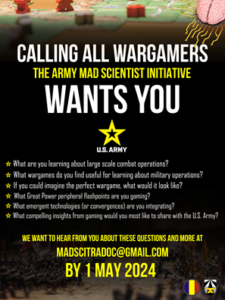 What wargames do you find useful for learning about military operations?
What wargames do you find useful for learning about military operations?
-
-
-
- If you could imagine the perfect wargame, what would it look like?
-
-
-
- What Great Power peripheral flashpoints are you gaming?
-
-
-
- What emergent technologies (or convergences) are you integrating into your wargaming?
-
-
-
- What compelling insights from gaming would you most like to share with the U.S. Army?
-
We were overwhelmed with the number of responses we received — a hearty Mad Scientist “Thank you!” to everyone who contributed! We will be featuring more of what we learned in upcoming blog posts and podcasts in the weeks and months ahead, leading up to our Mad Scientist Conference on Wargaming later this fall — stay tuned to the Mad Scientist Laboratory for more information about this event!
In today’s blog post, Andrew Olson addresses one often neglected aspect of wargaming LSCO — Civilian Harm Mitigation and Response (CHMR) — now a DoD priority with the implementation of DoDI 3000.17 on 21 December 2023:
“The protection of civilians and civilian objects is fundamentally consistent with the effective, efficient, and decisive use of force. CHMR supports U.S. national security interests, including by furthering strategic objectives to achieve long-term strategic success, enhancing the effectiveness and legitimacy of military operations, and demonstrating moral leadership.
Commanders at all levels have a great responsibility to exercise the leadership necessary to reduce the risk of harm to civilians and civilian objects during military operations involving the use of force.”
As Mr. Olson explains below, failing to address CHMR during the execution of LSCO could have grave operational and strategic consequences for the United States. Incorporating CHMR injects early and often during wargaming iterations can provide our Leaders with the requisite situational understanding on how to successfully execute combat operations, achieve mission objectives, and win decisively on the battlefield, while simultaneously 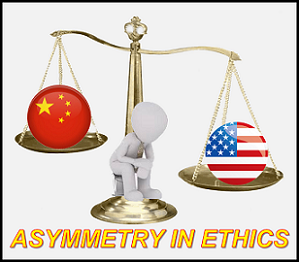 complying with our Nation’s CHMR policy. This challenge of complying with CHMR during LSCO may be further compounded by an asymmetry in ethics, where our autocratic adversaries may or may not adhere to similar Rules of Engagement (RoE). Our Leaders need to be prepared to encounter and prevail against foes who will exploit this battlefield dichotomy — Read on!]
complying with our Nation’s CHMR policy. This challenge of complying with CHMR during LSCO may be further compounded by an asymmetry in ethics, where our autocratic adversaries may or may not adhere to similar Rules of Engagement (RoE). Our Leaders need to be prepared to encounter and prevail against foes who will exploit this battlefield dichotomy — Read on!]
While assisting with a Taiwan wargame for Nation Defense University (NDU) students, I noticed NDU staff facilitators point out to students when the targets they had hit were near or on civilian infrastructure. Facilitators reminded Red players when striking U.S. bases in Japan how many civilians are in and around said bases. They also reminded Blue players when striking ports 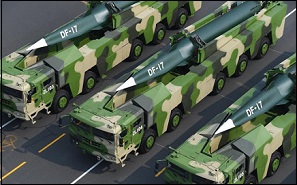 that they were not only disrupting landing forces headed for Taiwan, as those ports are near major civilian population centers. Their gentle prompting made the students uncomfortable, and rightfully so, as the staff helped them fully imagine the potential fallout from their decisions — the headlines, the political fallout, the likely civilian causalities — and asked them if they had considered the civilian impacts before they rolled the dice. They often hadn’t. The reality is that LSCO with a peer competitor like China involves a scale of risk to civilians and the civilian environment that the U.S. has not had contended with since the Second World War.
that they were not only disrupting landing forces headed for Taiwan, as those ports are near major civilian population centers. Their gentle prompting made the students uncomfortable, and rightfully so, as the staff helped them fully imagine the potential fallout from their decisions — the headlines, the political fallout, the likely civilian causalities — and asked them if they had considered the civilian impacts before they rolled the dice. They often hadn’t. The reality is that LSCO with a peer competitor like China involves a scale of risk to civilians and the civilian environment that the U.S. has not had contended with since the Second World War.
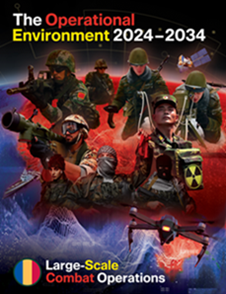 The U.S. Army faces an Operational Environment wholly different than how it has learned to fight over the last 30 years. LSCO introduce a variety of unique challenges, given the high-tempo operations with a highly capable adversary in a complex civilian environment. The addition of a multi-domain area of responsibility, the presence of multinational/partnered operations, bi-lateral or multilateral kill webs, and the substantial risk (magnitude and severity) of civilian harm that can have negative strategic impact require that we adapt the way we approach anticipating, mitigating, and responding to civilian harm.
The U.S. Army faces an Operational Environment wholly different than how it has learned to fight over the last 30 years. LSCO introduce a variety of unique challenges, given the high-tempo operations with a highly capable adversary in a complex civilian environment. The addition of a multi-domain area of responsibility, the presence of multinational/partnered operations, bi-lateral or multilateral kill webs, and the substantial risk (magnitude and severity) of civilian harm that can have negative strategic impact require that we adapt the way we approach anticipating, mitigating, and responding to civilian harm.
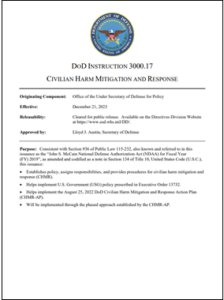 Leadership has already recognized this as a key priority. Effective 21 December 2023, DoD Instruction 3000.17, Civilian Harm Mitigation and Response (CHMR) establishes CHMR as a national security priority — outlining policy, responsibilities, and procedures for CHMR. The DODI and accompanying action plan (CHMR-AP) reflect key priorities: improving commanders’ understanding of the likely effect of operations, mitigating civilian harm without comprising mission effectiveness, and responding intentional when harm does occur.
Leadership has already recognized this as a key priority. Effective 21 December 2023, DoD Instruction 3000.17, Civilian Harm Mitigation and Response (CHMR) establishes CHMR as a national security priority — outlining policy, responsibilities, and procedures for CHMR. The DODI and accompanying action plan (CHMR-AP) reflect key priorities: improving commanders’ understanding of the likely effect of operations, mitigating civilian harm without comprising mission effectiveness, and responding intentional when harm does occur.
Wargames should intentionally and systematically explore how to mitigate civilian harm in LSCO, or the DoD faces unintended consequences to national objectives and operational maneuver. In the past, commanders have been frustrated to find operations created refugee flows directly in the path of 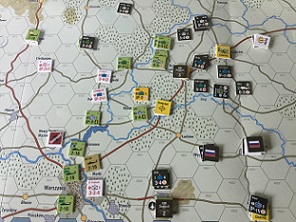 advancing troops, that they destroyed critical infrastructure later needed for allies and partners, or when operations were halted due to national backlash. National leaders face substantial negative impacts to U.S. standing, partner and allied willingness to operate with the US, and degraded popular support. In a future environment where coalitions matter, where we are likely to fight from allied territory and alongside allied forces, where international support will be key, and U.S. operations heavily publicized and observed, we must be prepared to mitigate and respond to civilian harm.
advancing troops, that they destroyed critical infrastructure later needed for allies and partners, or when operations were halted due to national backlash. National leaders face substantial negative impacts to U.S. standing, partner and allied willingness to operate with the US, and degraded popular support. In a future environment where coalitions matter, where we are likely to fight from allied territory and alongside allied forces, where international support will be key, and U.S. operations heavily publicized and observed, we must be prepared to mitigate and respond to civilian harm.
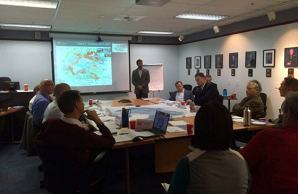 Wargames provide one tool to approach this key preparation. Wargames allow us to better educate planners and operators on the likely impact of civilian harm and effects to the civilian environment, providing them space to explore decisions in the safe-to-fail experiential environment of a wargame. Commanders will need to prepare intentionally for the realities of LSCO and structure information infrastructure and command and control to facilitate CHMR in a contested environment. Here too, wargames can help by allowing these commands to better understand the gaps and seams in their structures before war reveals these vulnerabilities after it is too late. On the strategic level, wargames can explore plausible consequences for decisions, to better inform planning and help Senior Leaders understand the consequences of escalation and different Rules of Engagement (ROEs). Wargames are well suited for instances where one lacks comprehensive hard data to analyze or solidified concepts to test. This the situation the U.S. finds itself in with
Wargames provide one tool to approach this key preparation. Wargames allow us to better educate planners and operators on the likely impact of civilian harm and effects to the civilian environment, providing them space to explore decisions in the safe-to-fail experiential environment of a wargame. Commanders will need to prepare intentionally for the realities of LSCO and structure information infrastructure and command and control to facilitate CHMR in a contested environment. Here too, wargames can help by allowing these commands to better understand the gaps and seams in their structures before war reveals these vulnerabilities after it is too late. On the strategic level, wargames can explore plausible consequences for decisions, to better inform planning and help Senior Leaders understand the consequences of escalation and different Rules of Engagement (ROEs). Wargames are well suited for instances where one lacks comprehensive hard data to analyze or solidified concepts to test. This the situation the U.S. finds itself in with 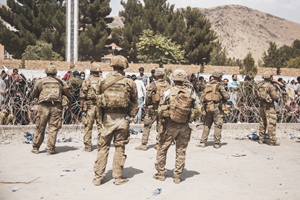 CHMR. We have lessons from the past but face wholly different environments of the future. We have basic concepts but require intentional work to inculcate into our command culture and build it into practice.
CHMR. We have lessons from the past but face wholly different environments of the future. We have basic concepts but require intentional work to inculcate into our command culture and build it into practice.
While Professional Military Education (PME) schoolhouses are beginning to explore these challenges, wargames still have a long way to go in robustly exploring this area. A “CHMR inject” at the tail end of an exercise is insufficient to accomplish the work we need. If the DoD is serious that CHMR is key to victory, then better CHMR wargames can help us take those first steps in adapting our Leaders to the future of LSCO.
Stay tuned to the Mad Scientist Laboratory for “Save the Date” information regarding our Wargaming conference later this fall!
If you enjoyed this post, check out the TRADOC G-2‘s new The Operational Environment 2024-2034: Large-Scale Combat Operations, then learn how this latest assessment was developed in Precursor to Victory: Understanding the Operational Environment and the associated podcast with Ian Sullivan.
Explore the TRADOC G-2‘s Operational Environment Enterprise web page, brimming with information on the OE and how our adversaries fight, including:
Our China Landing Zone, full of information regarding our pacing challenge, including ATP 7-100.3, Chinese Tactics, BiteSize China weekly topics, People’s Liberation Army Ground Forces Quick Reference Guide, and our thirty-plus snapshots captured to date addressing what China is learning about the Operational Environment from Russia’s war against Ukraine (note that a DoD Common Access Card [CAC] is required to access this last link).
Our Russia Landing Zone, including the BiteSize Russia weekly topics. If you have a CAC, you’ll be especially interested in reviewing our weekly RUS-UKR Conflict Running Estimates and associated Narratives, capturing what we learned about the contemporary Russian way of war in Ukraine over the past two years and the ramifications for U.S. Army modernization across DOTMLPF-P.
Our Running Estimates SharePoint site (also requires a CAC to access), containing our monthly OE Running Estimates, associated Narratives, and the 2QFY24 and 3QFY24 OE Assessment TRADOC Intelligence Posts (TIPs).
Review the following related Mad Scientist Laboratory wargaming content:
Calling All Wargamers & Wicked Problems Writing Contest, and associated podcast
Live from D.C., it’s Fight Night (Parts One and Two) and associated podcasts (Parts One and Two)
Would You Like to Play a Game? Wargaming as a Learning Experience and Key Assumptions Check and “No Option is Excluded” — Using Wargaming to Envision a Chinese Assault on Taiwan, by Ian Sullivan
Using Wargames to Reconceptualize Military Power, by proclaimed Mad Scientist Caroline Duckworth
Gaming the System: How Wargames Shape our Future and associated podcast, with guest panelists Ian Sullivan, Mitchell Land, LTC Peter Soendergaard, Jennifer McArdle, Becca Wasser, Dr. Stacie Pettyjohn, Sebastian Bae, Dan Mahoney, and Jeff Hodges
The Storm After the Flood virtual wargame scenario, video, notes, and Lessons Learned presentation and video, presented by proclaimed Mad Scientists Dr. Gary Ackerman and Doug Clifford, The Center for Advanced Red Teaming, University at Albany, SUNY
Gamers Building the Future Force and associated podcast
Fight Club Prepares Lt Col Maddie Novák for Cross-Dimension Manoeuvre, by now COL Arnel David, U.S. Army, and Major Aaron Moore, British Army, along with their interview in The Convergence: UK Fight Club – Gaming the Future Army and associated podcast
About the Author: Andrew Olson is a research analyst and wargamer at the Center for Naval Analysis (CNA) where he serves as the wargaming lead for Civilian Harm Mitigation and Response (CHMR). Outside of work, Mr. Olson supports educational wargaming around the D.C. area and will teach Wargame Design and Practice at Georgetown University in Fall 2024.
Disclaimer: The views expressed in this blog post do not necessarily reflect those of the U.S. Department of Defense, Department of the Army, Army Futures Command (AFC), or Training and Doctrine Command (TRADOC).

